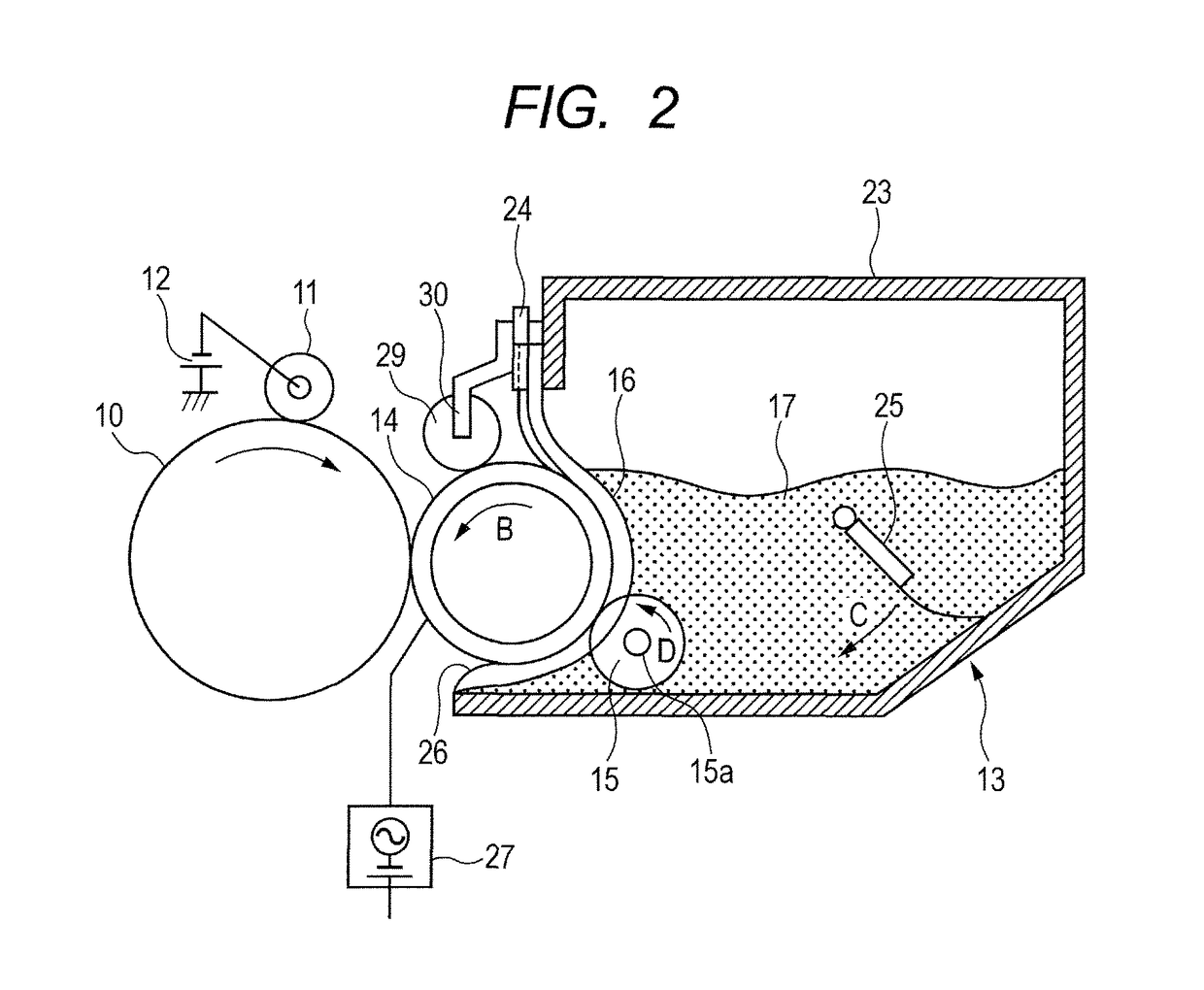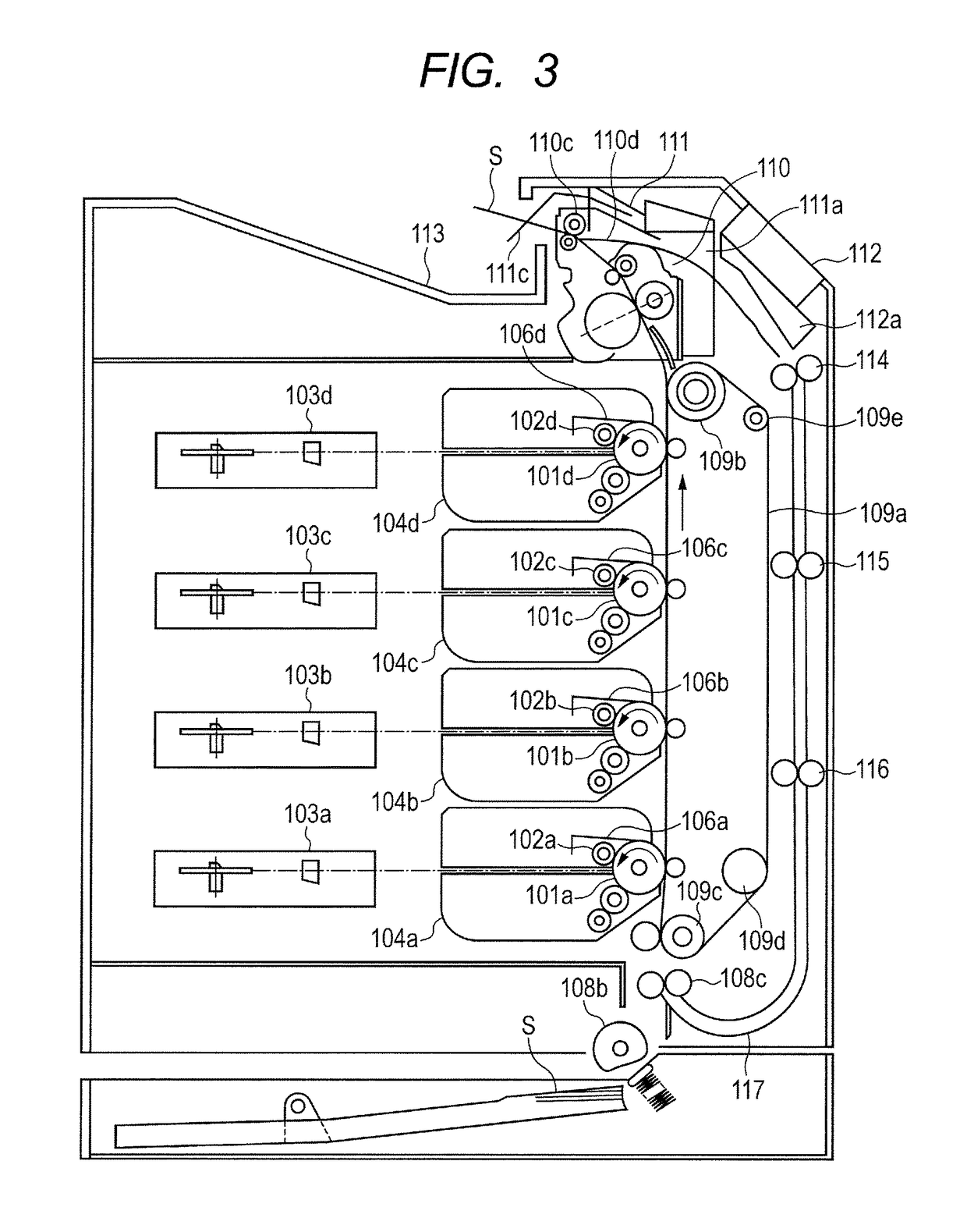Toner and method for producing toner
a technology of toner and production method, applied in the field of toner, can solve the problems of insufficient durability, insufficient durability after output of a large number of prints, and insufficient stability of charging performance and durability of toner, and achieve the effects of stable charging properties, high stability of images, and sufficient durability
- Summary
- Abstract
- Description
- Claims
- Application Information
AI Technical Summary
Benefits of technology
Problems solved by technology
Method used
Image
Examples
example 1
[0268]Preparation of Toner Base Particles
[0269]A 0.1 mol / L Na3PO4 aqueous solution (850.0 parts) was placed in a container equipped with a high-speed stirrer Clearmix (manufactured by M Technique Co., Ltd.). The number of rotations was adjusted to 15000 rpm, and the container was heated to 60° C. A 1.0 mol / L CaCl2 aqueous solution (68.0 parts) was added thereto to prepare an aqueous medium containing a fine, poorly water-soluble dispersant Ca3(PO4)2. After stirring for 30 minutes, the pH was adjust to 6.0.
[0270]The materials listed below were dissolved at 100 r / min using a propeller type stirrer to prepare a dissolution solution.
[0271]styrene (70.0 parts)
[0272]n-butyl acrylate (30.0 parts)
[0273]saturated polyester resin (3.0 parts)
[0274](terephthalic acid-propylene oxide modified bisphenol A copolymer, acid value: 13 mgKOH / g, Mw: 14500)
[0275]Next, the materials listed below were added to the dissolution solution:
[0276]C.I. Pigment Blue 15:3 (6.5 parts)
[0277]ester wax (12.0 parts)
[02...
examples 2 to 27
[0287]Toner 2 to 27 were prepared in the same manner as in Example 1 except that the pH, the type and amount of the aqueous dispersion of resin particles to be added, the temperature during addition of the aqueous dispersion of resin particles, and the temperature during heating were varied as shown in Table 4.
[0288]
TABLE 4Aqueous dispersion of resin particlesTemperatureAmount addedSolid contentduringTemperatureAdhesion pHType of resin(parts by(parts byadditionduring heatingpHfine particlesmass)mass)(° C.)(° C.)Example 1Toner 18.5E-115.03.02280Example 2Toner 28.5E-215.03.02280Example 3Toner 38.5E-315.03.02280Example 4Toner 48.5E-415.03.02280Example 5Toner 58.5E-515.03.02280Example 6Toner 68.5E-615.03.02280Example 7Toner 78.5E-715.03.02290Example 8Toner 88.5E-815.03.02290Example 9Toner 98.5E-915.03.02290Example 10Toner 108.5E-1015.03.02290Example 11Toner 118.5E-1115.03.02280Example 12Toner 128.5E-1215.03.02280Example 13Toner 138.5E-1315.03.02280Example 14Toner 148.5E-1415.03.02280Exa...
example 28
[0289]Resin A-1 was frozen, and was pulverized to prepare a freeze pulverized product of Resin A-1.
[0290]A dispersion liquid of toner base particles was prepared in the same manner as in Example 1. The dispersion liquid of toner base particles was controlled to a pH of 1.5. After the dispersion liquid was stirred as it was for two hours, filtration and washing with water were repeated three times. A solid content was then recovered, and was dried in a reduced pressure dryer at 30° C. for one day.
[0291](Fine Particle Adhering Step)
[0292]The freeze pulverized product of Resin A-1 (3.0 parts) was added to the dried toner base particles (100.0 parts), and the mixture was placed in a dry particle composite apparatus (manufactured by Hosokawa Micron Corporation, Nobilta NOB-130). Adhesion was performed under conditions of a treatment temperature: 30° C. and a rate of a rotary blade: 90 m / sec to prepare Toner particle 28.
[0293]Hydrophobic silica fine powder (2.0 parts) was mixed with Toner...
PUM
 Login to View More
Login to View More Abstract
Description
Claims
Application Information
 Login to View More
Login to View More - R&D
- Intellectual Property
- Life Sciences
- Materials
- Tech Scout
- Unparalleled Data Quality
- Higher Quality Content
- 60% Fewer Hallucinations
Browse by: Latest US Patents, China's latest patents, Technical Efficacy Thesaurus, Application Domain, Technology Topic, Popular Technical Reports.
© 2025 PatSnap. All rights reserved.Legal|Privacy policy|Modern Slavery Act Transparency Statement|Sitemap|About US| Contact US: help@patsnap.com



